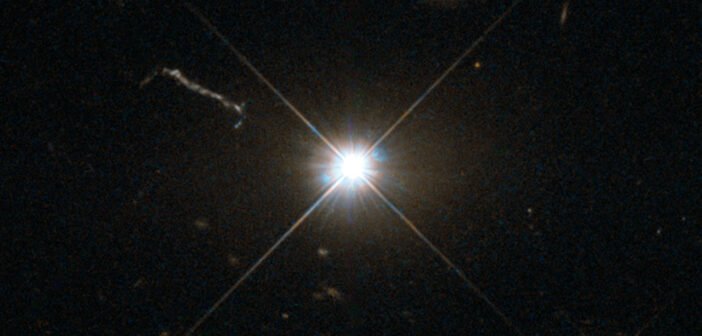
**Red Monsters Unveiled: JWST Discovers Massive, Star-Generating Galaxies from the Universe’s Infancy**
A research team utilizing NASA’s James Webb Space Telescope (JWST) has made a groundbreaking discovery that challenges existing astronomical paradigms. They have located three immense galaxies, referred to as the “Red Monsters,” which emerged in the less than one billion years following the Big Bang. With masses similar to or even exceeding that of our Milky Way, these galaxies are exhibiting remarkable star formation rates—contradicting traditional models of galaxy evolution.
The conundrum? Current scientific models suggest that galaxies from this early cosmic era—the infancy of the universe—should not have attained such vast sizes or efficiently transformed gas into stars. Yet, this is precisely what the JWST has revealed. The details of this discovery are published in the journal *Nature*, challenging the fundamental understanding of star and galaxy formation in the nascent universe.
Transcending Galaxy Growth Norms
The dominant theory of galaxy formation posits that large galaxies gradually evolve within extensive dark matter halos, converting only a small percentage of the gas they gather into stars—averaging around 20%. However, the unique aspect of the Red Monsters is their striking efficiency in star formation: they are converting 50% of their available gas into stars, a rate two to three times greater than that of more evolved galaxies recognized for their efficiency.
“Our results are altering the perception of galaxy formation in the early Universe,” remarked Dr. Mengyuan Xiao, the study’s lead author from the University of Geneva. These colossal galaxies remained hidden from astronomers for an extended duration due to their concealment by dense clouds of cosmic dust, rendering them virtually invisible in most visible light observations.
Accurate Measurements Expose the Unimaginable
The revelation was made feasible through the JWST’s FRESCO program, which thoroughly analyzed ’emission-line galaxies’ from the universe’s initial billion years. Employing the telescope’s NIRCam/grism spectroscopy, the team achieved exceptional precision in measuring the distances and masses of these galaxies. In this context, grism spectroscopy acts like a cosmic prism—dispersing light into its fundamental components, enabling scientists to discern the composition and evolution of galaxies.
Among the 36 massive, dust-enshrouded galaxies studied, three prominently emerged. “Prior to JWST, the characteristics of these Red Monsters were poorly understood, as they remain optically obscured due to significant dust attenuation,” stated Dr. David Elbaz from CEA Paris-Saclay. The JWST’s capacity to detect longer wavelengths of light, unaffected by dust, facilitated this revolutionary observation.
Challenging Established Models
Galaxies in this epoch were anticipated to develop gradually, yet the Red Monsters challenge this expectation. Not only are they converting substantial amounts of gas into stars, but their relative impact on the cosmic star formation rate is remarkable—they account for about 17% of all star formation during redshift 5 to 6, a timeframe approximately 12.8 billion years ago.
The models utilized by cosmologists to elucidate the evolution of galaxies in the early universe struggle to explain such extraordinary star-formation efficiency compacted into a relatively brief period following the Big Bang. Although the findings do not outright contradict the fundamental tenets of standard cosmology, they strongly imply the existence of unidentified processes that allow these early galaxies to expand so rapidly.
A New Era in Cosmic Understanding
According to Dr. Xiao, “These findings suggest that galaxies in the early Universe could form stars with unforeseen efficiency. As we delve deeper into these galaxies, they will enhance our comprehension of the early universe conditions and may necessitate modifications in our galaxy evolution theories.”
Indeed, the Red Monsters are merely the starting point in humanity’s quest to understand how galaxies—and the universe itself—developed from the hot, dense state post-Big Bang. Further observations will be crucial to unveil the mysteries behind these extraordinary galaxies. Future investigations using both the JWST and the Atacama Large Millimeter Array (ALMA) will seek additional Red Monsters, striving to clarify how such an active star-forming mechanism functioned in the early cosmos.
Glossary
- Dark matter halo: An unseen, massive area encircling a galaxy, thought to be composed of dark matter, significantly aiding in a galaxy’s gravitational binding.
- Emission-line galaxy: A galaxy characterized by specific bright lines in its light spectrum, offering insights into the galaxy’s chemical makeup and star formation activities.